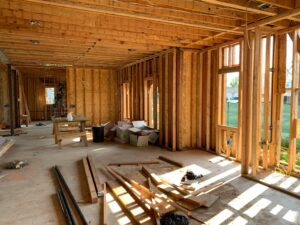Weathering the Storms in Maryland and Washington DC
When it comes to living in Maryland and Washington DC, homeowners face unique weather challenges. From scorching summers to icy winters, the region’s climate can put significant strain on residential structures. This blog post aims to provide homeowners with practical strategies for building resilience against these weather conditions. We’ll explore various maintenance tips, structural improvements, and innovative technologies that can help you protect your home. By the end of this post, you’ll have a comprehensive understanding of how to combat Maryland and Washington DC’s weather and other structural challenges.
 Understanding Weather Challenges in Maryland and Washington DC
Understanding Weather Challenges in Maryland and Washington DC
Maryland and Washington DC experience a wide range of weather conditions. The summers can be brutally hot and humid, while winters often bring snow and ice. Additionally, the region is prone to heavy rainstorms and occasional hurricanes. These weather patterns can lead to various issues such as flooding, wind damage, and even structural deterioration.
The Impact of Weather on Residential Structures
Weather conditions can significantly affect the integrity of homes in Maryland and Washington DC. High humidity levels can cause wood to rot and metal to corrode. Heavy snowfall can put immense pressure on roofs, leading to potential collapses. Frequent rainstorms can result in water leakage and foundation problems. It’s essential for homeowners to understand these impacts to take preventive measures.
Importance of Resilience in Home Structures
Resilience refers to the ability of a home to withstand and recover from adverse weather conditions. A resilient home not only protects its occupants but also reduces repair and maintenance costs. Investing in resilience can save homeowners from the financial burden of extensive weather-related damages. It also enhances the overall value of the property.
Preparing Your Home for Extreme Weather
Proper maintenance is crucial for preparing your home against extreme weather. Start by inspecting your roof for any loose or damaged shingles. Ensure that gutters and downspouts are clean and free of debris to prevent water accumulation. Seal any cracks or gaps in windows and doors to avoid drafts and water leakage. Regularly check your foundation for any signs of weakness.
Structural Improvements for Enhanced Resilience
In addition to regular maintenance, consider making structural improvements to your home. Reinforce your roof with hurricane straps or clips to secure it during high winds. Install impact-resistant windows and doors to protect against flying debris. Elevate your home or install flood barriers if you live in a flood-prone area. These improvements can significantly enhance your home’s resilience.
Innovative Technologies for Home Resilience
Advancements in technology have introduced various solutions for enhancing home resilience. Smart home devices such as weather sensors can provide real-time updates on weather conditions, allowing homeowners to take immediate action. Solar panels not only reduce energy costs but also ensure an uninterrupted power supply during storms. Additionally, energy-efficient insulation materials can regulate indoor temperatures, reducing the strain on heating and cooling systems.
 Materials That Enhance Home Durability
Materials That Enhance Home Durability
Choosing the right materials can play a significant role in your home’s resilience. Opt for weather-resistant materials such as fiber cement siding, which can withstand extreme temperatures and moisture. Metal roofing is another excellent choice due to its durability and resistance to harsh weather conditions. For interior improvements, consider using moisture-resistant drywall and treated wood to prevent mold and rot.
Insurance and Financial Planning for Weather-Related Damages
Having the right insurance coverage is essential for protecting your home from weather-related damages. Review your homeowner’s insurance policy to ensure it covers common weather events in your area. Consider additional coverage for specific risks such as floods or hurricanes. It’s also wise to set aside an emergency fund for unexpected repairs and maintenance.
Real-Life Examples of Resilient Homes
Numerous homes in Maryland and Washington DC have successfully withstood extreme weather events. For instance, a home in Annapolis survived a hurricane due to its reinforced roof and impact-resistant windows. Another home in Maryland’s coastal area remained unaffected by flooding thanks to its elevated foundation. These examples highlight the effectiveness of resilience measures.
Building resilience against Maryland and Washington DC’s weather challenges is not just about protecting your home; it’s about ensuring the safety and well-being of your family. By understanding the impacts of local weather, taking preventive measures, and investing in innovative technologies, you can significantly enhance your home’s durability. Don’t wait for the next storm to take action. Start implementing these strategies today.
Ready to make your home more resilient? Contact our team of experts for a consultation and discover how you can safeguard your property against extreme weather. Let’s build a stronger, more durable home together.


 Materials That Enhance Home Durability
Materials That Enhance Home Durability

